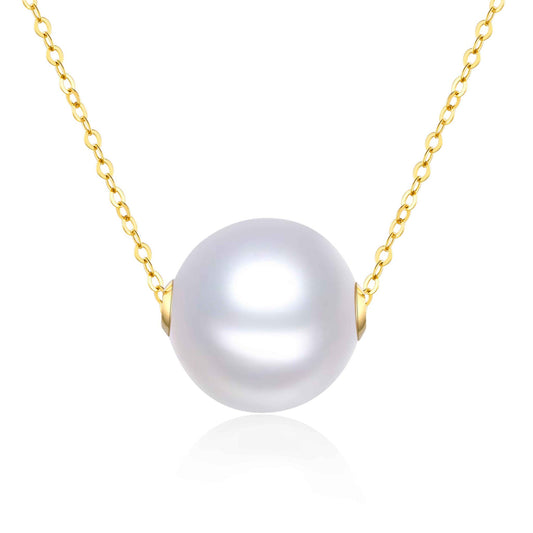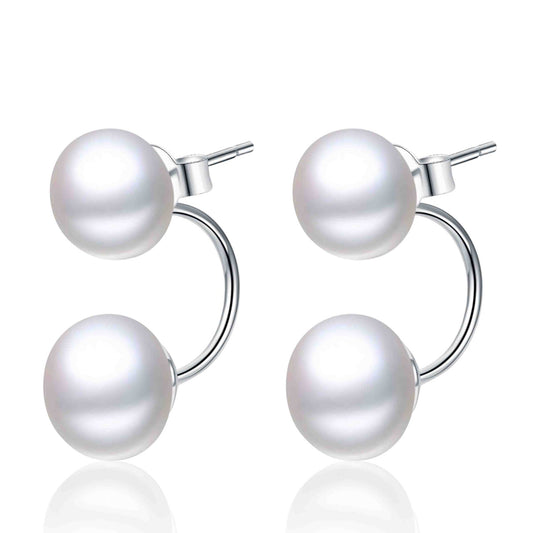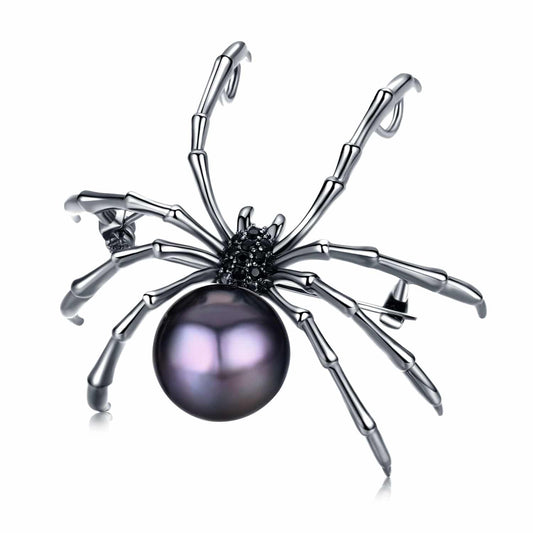
Pearl colors explained
Share
Think of any color under the sun – anything. There is probably a pearl somewhere in that color. The palette of pearl colors can range from the most commonly white, to pink, blue, black, purple, green, and golden, to just about any shade in between.
The primary shade is determined by the body of the pearl, but there are two other effects you should be aware of: overtone and the orient effect.
Body Color, Overtone, and the Orient Effect
The body color will either have cool or warm hues. Cool shades will include green and purple while warm tones include colors such as red and yellow.
The overtone refers to the color on the surface of the pearl. The overtone usually appears to be floating on the surface and comes in a variety of colors.
The orient effect refers to iridescent colors that seem to change and swirl as the pearl moves or if the light changes. This effect is caused by light reflecting through the various layers of nacre a pearl is made of.
The most common pearls have a white body with a cream-colored overtone. Two pearls with the same body color but different overtones will look different from each other. Similarly, if the pearls have the same overtone but different body colors, they won’t look the same.
How Pearl Colors Are Determined
The type of mollusk the pearl was formed in determines the color of a pearl’s body. Other factors include the water and the initial nucleus or core. Usually, certain types of oysters produce particular pearl colors.
The color has no real impact on the quality of the pearl, but design tastes and color trends do affect the perceived beauty. For this reason, pearl sellers may artificially color a pearl to fit in with trends, so make sure you know where the pears come from and whether its colors are natural or not before you buy.
The most common artificially colored pearls are black freshwater or Akoya pearls, and dark golden South Sea pearls.
Here are a few tips to establish whether pearls were artificially colored or not:
- Freshwater or Akoya pearls never come naturally in black, so all peacock, black, or silver colored freshwater are dyed.
- Most natural South Sea Golden Pearls or Edison Golden Pearls are a creamy gold or we call “champagne” color, not dark golden. Natural metallic dark golden south sea pearls are so rare, and they are available usually in auction houses. You may see in lots of stores including ours, or a TV commercial or jewelry store advertising a dark golden pearl with a metallic shine. Those are most probably dyed for a more prominent golden shine.
Saltwater Pearls
Akoya cultured pearls are grown in Chinese and Japanese waters. Their natural pearl colors usually are white or cream colored. In the South Sea, pearls are produced in Australia, the Philippines, and Indonesia. Their colors vary from natural white, cream, or golden. Tahitian pearls are grown in the islands of French Polynesia, which of course include Tahiti. The most expensive natural color pearls are the metallic dark gold color south sea pearls, and the most common natural color is the famous black Tahitian pearl color. Tahiti also produces pearls in gray, green, blue, and purple colors. The only natural black color pearls are Tahitian pearls.
Freshwater Pearls
Freshwater pearls are grown in rivers, lakes, and ponds. They are predominantly produced in China. Freshwater pearl colors come in a wide variety of pastel colors such as peach, pink, purple, bronze, champagne, as well as white. Lots of freshwater pearls are dyed into green, silver, black, or dark gold color to meet the jewelry market needs.
How New Technology Affects Colors
As technology evolves, new natural colors are introduced to the pearl industry from time to time. The most recent introduction was Edison pearls, which, apart from white, comes in an array of colors such as pink, gold, peach, metallic bronze, pink purple and aubergine-purple – colors that previously could only be found in natural saltwater pearls. Japan has the most advanced technology of patented pre-treatment of pearls which could increase the luster of pearls.
Which Color Should You Choose?
When shopping for pearl jewelry, take your skin tone or the skin tone of the person you’re buying it for into account. Hold the pearls against the skin to see what works, and what doesn’t. Usually rose-colored pearls go well with fair skin, while silver overtones usually complement a darker skin.
Timeless Pearl caters for a variety of tastes. Check out our different pearl colors and jewelry to find a piece and a color that suits you best.



